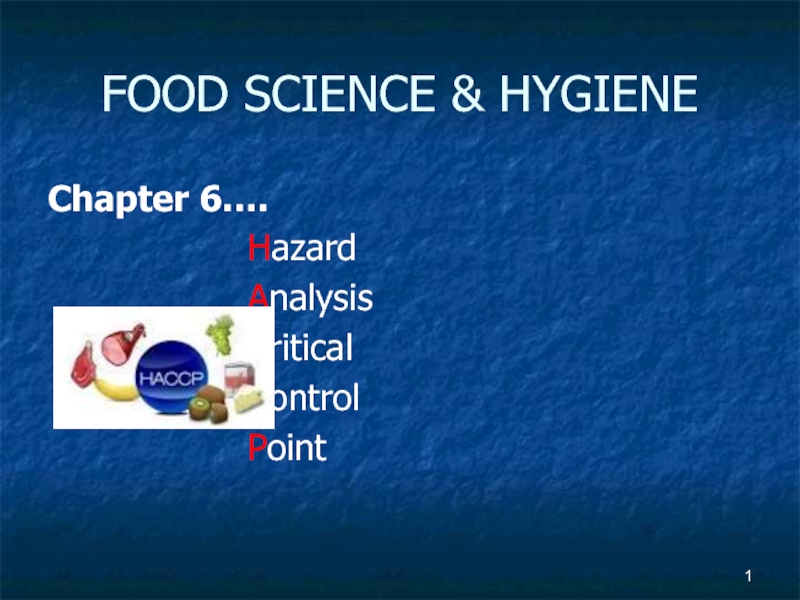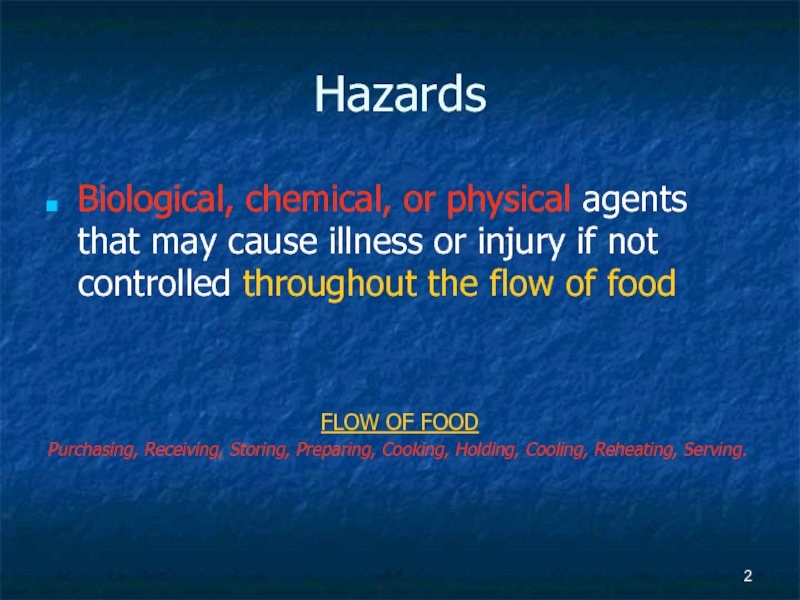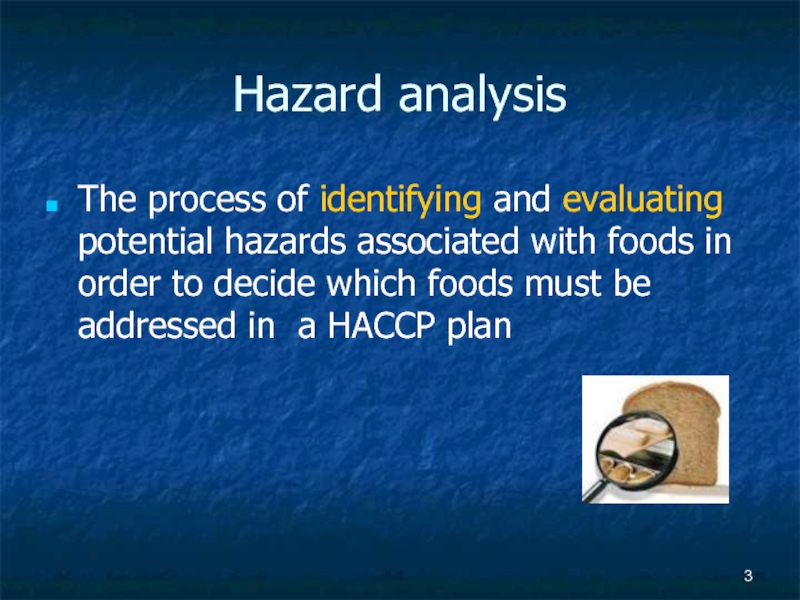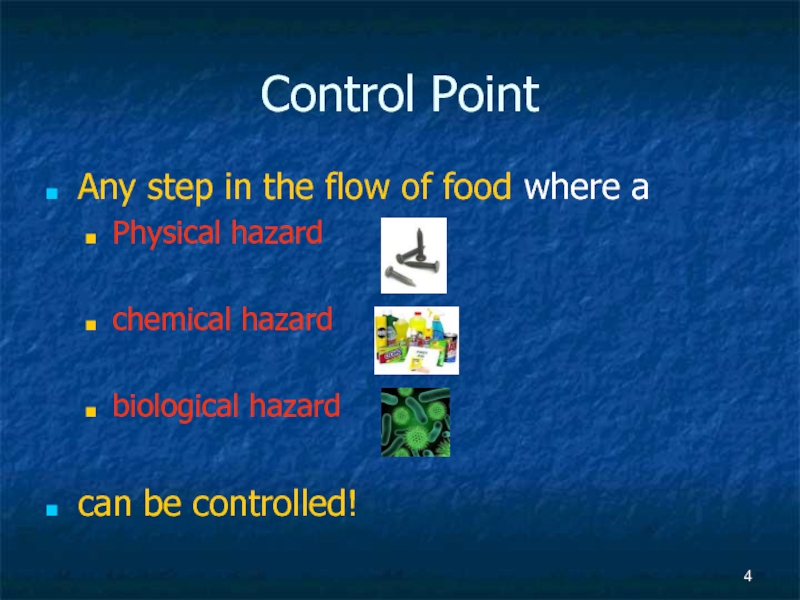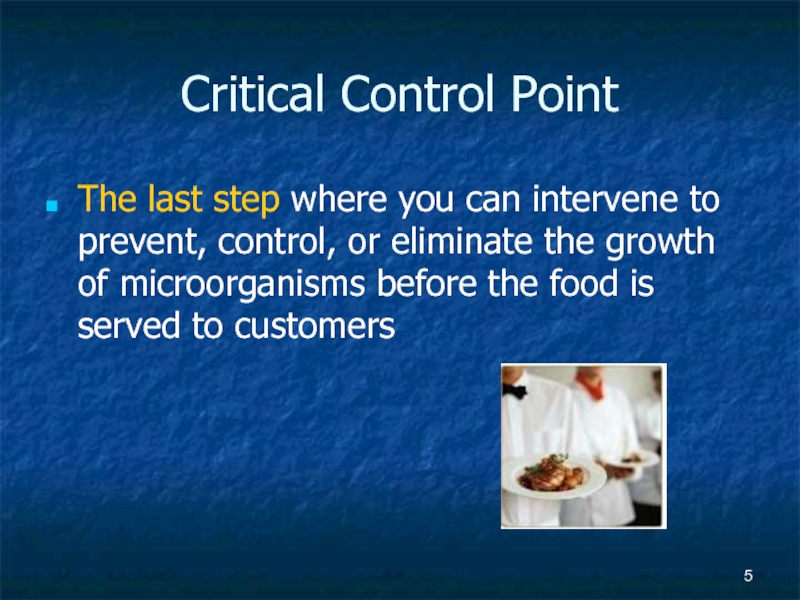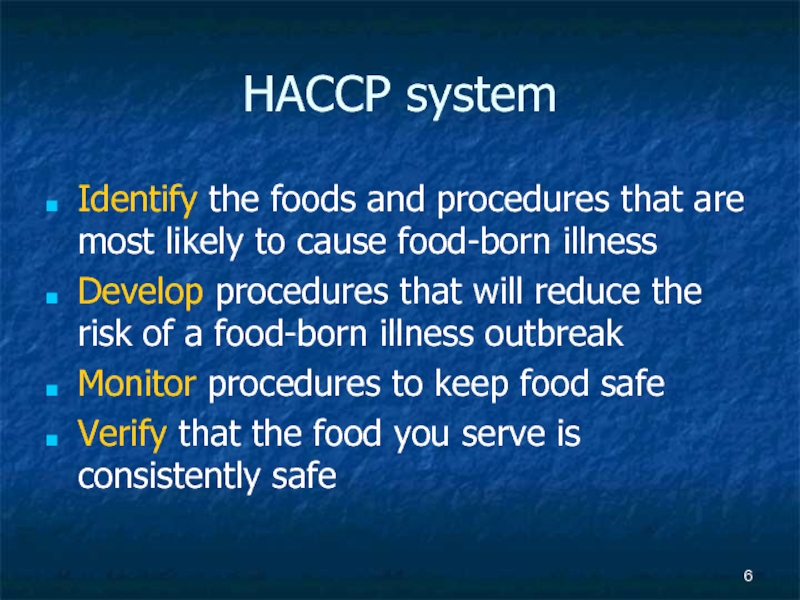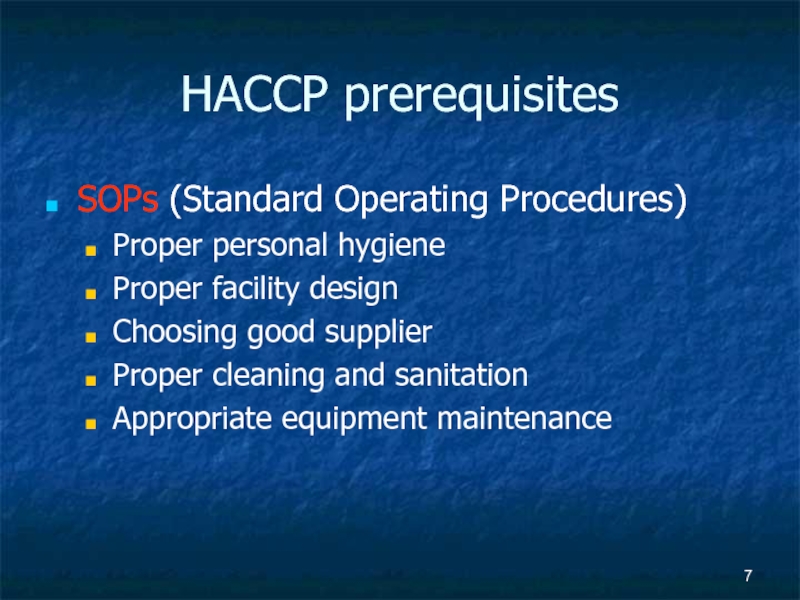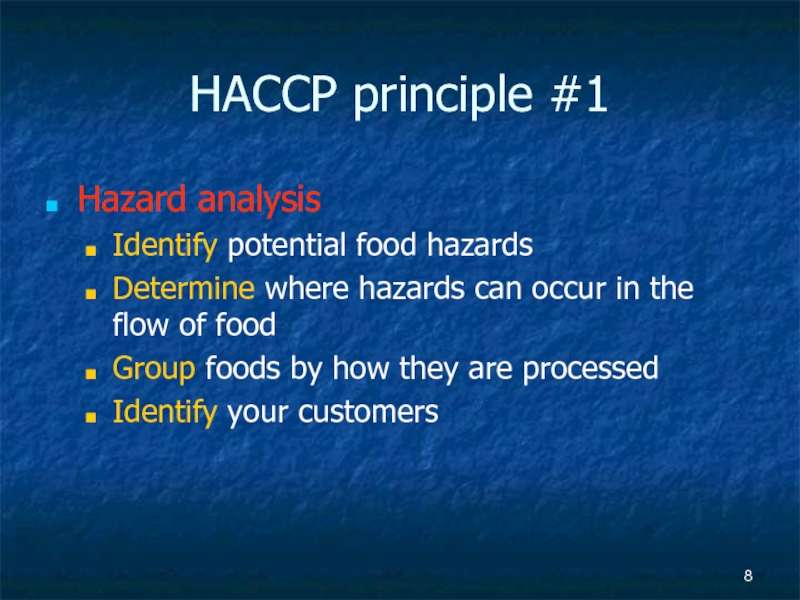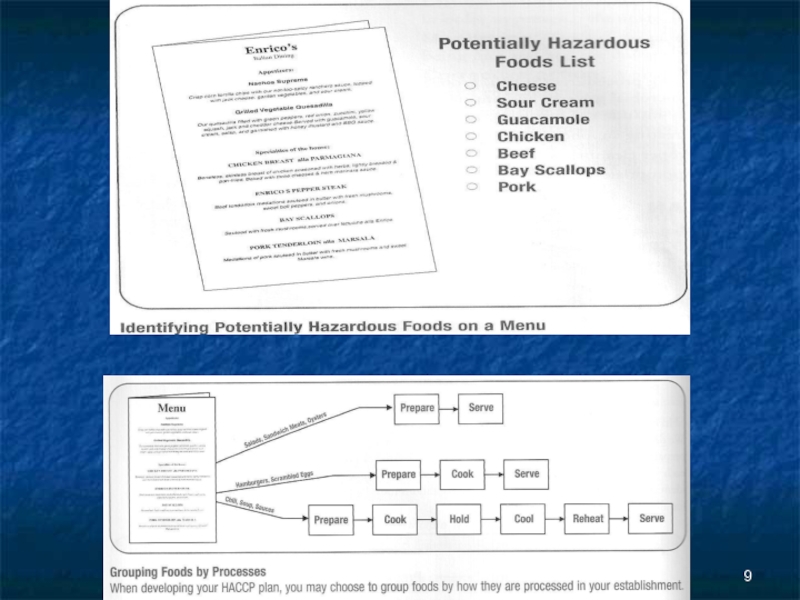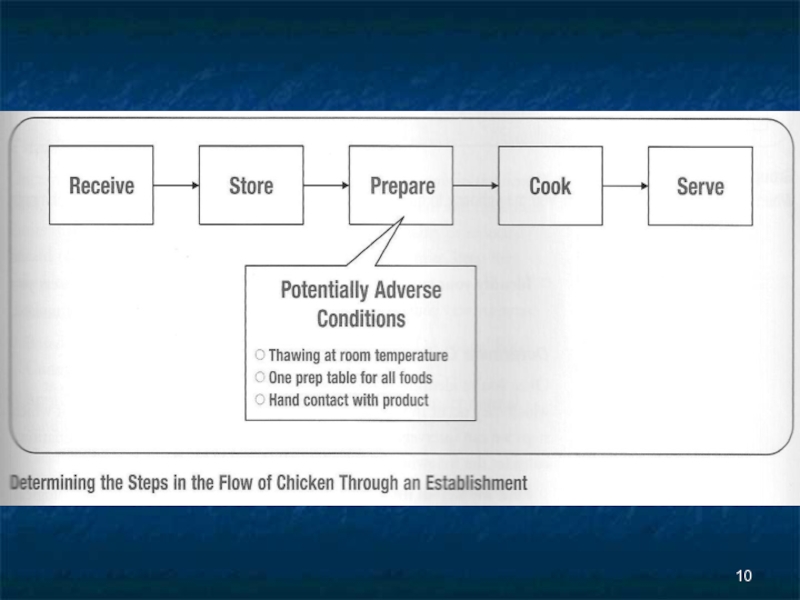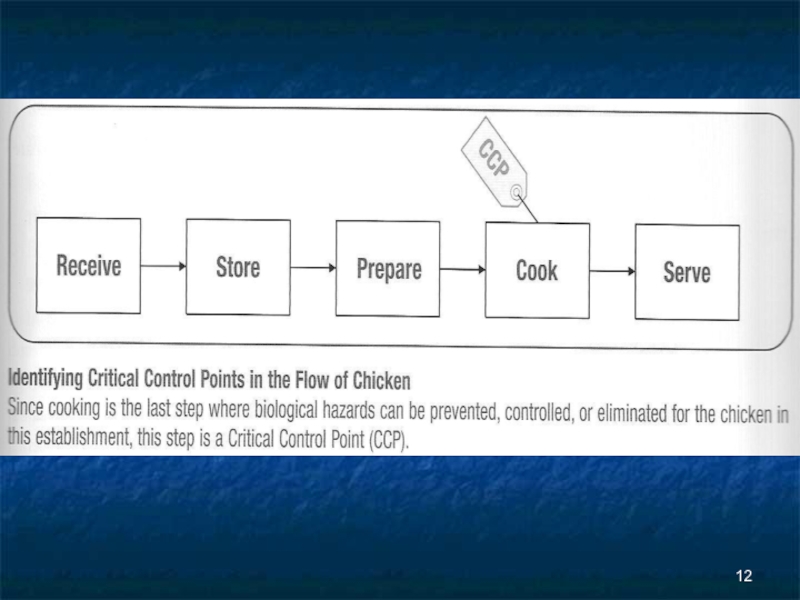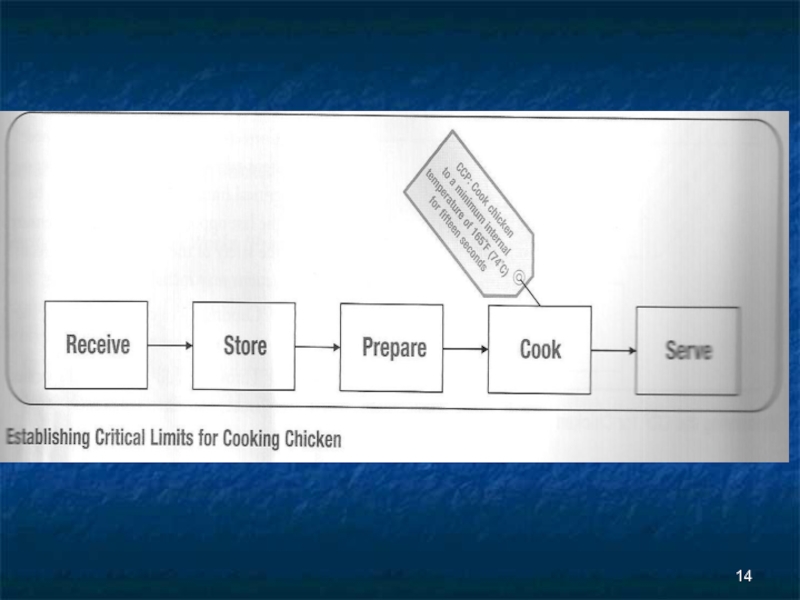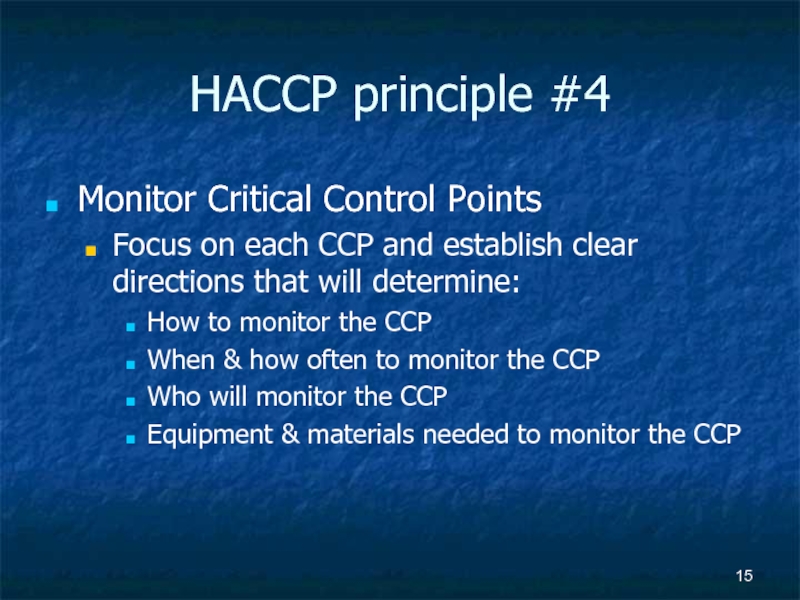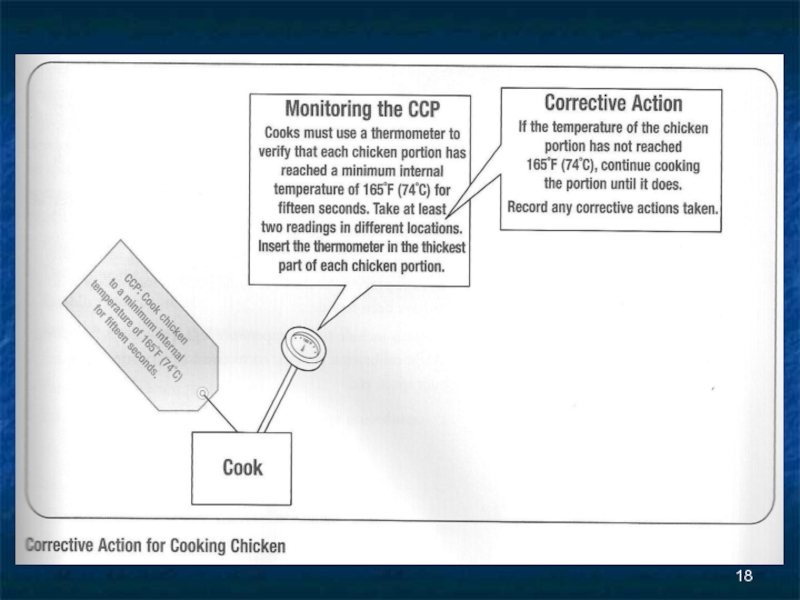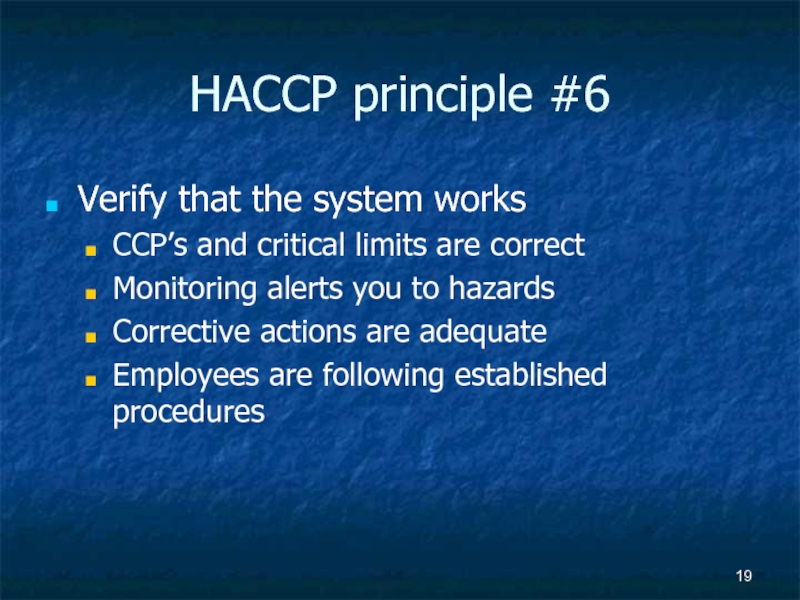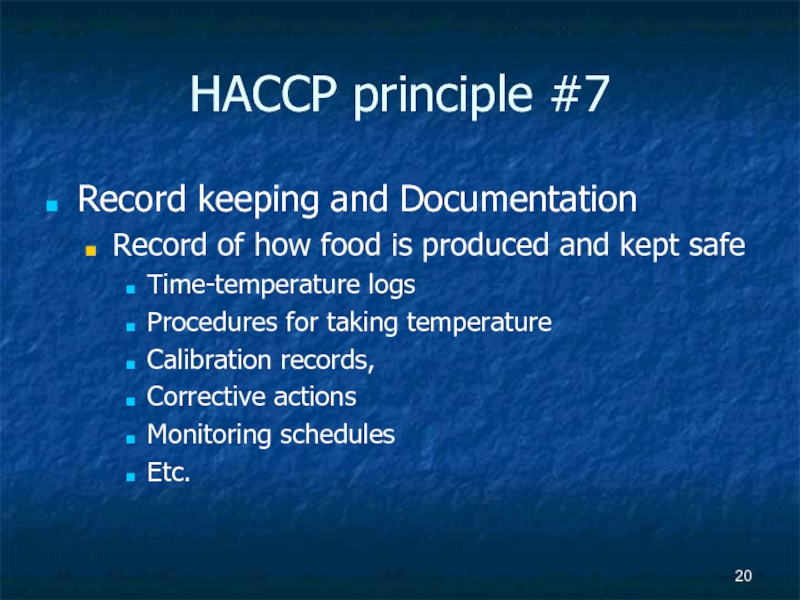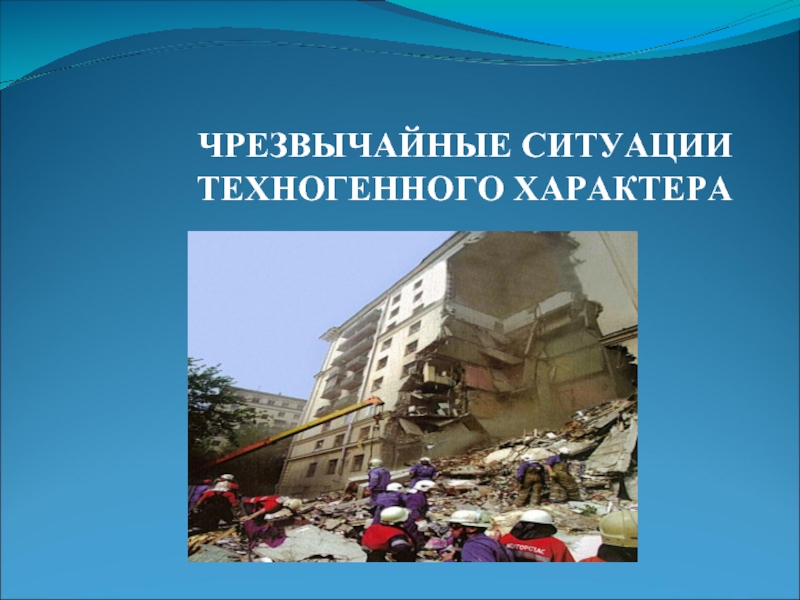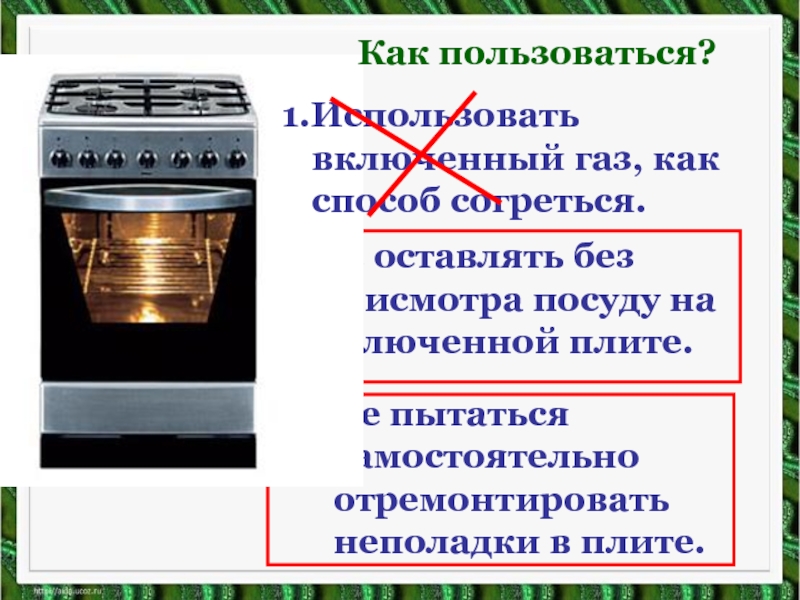- Главная
- Разное
- Дизайн
- Бизнес и предпринимательство
- Аналитика
- Образование
- Развлечения
- Красота и здоровье
- Финансы
- Государство
- Путешествия
- Спорт
- Недвижимость
- Армия
- Графика
- Культурология
- Еда и кулинария
- Лингвистика
- Английский язык
- Астрономия
- Алгебра
- Биология
- География
- Детские презентации
- Информатика
- История
- Литература
- Маркетинг
- Математика
- Медицина
- Менеджмент
- Музыка
- МХК
- Немецкий язык
- ОБЖ
- Обществознание
- Окружающий мир
- Педагогика
- Русский язык
- Технология
- Физика
- Философия
- Химия
- Шаблоны, картинки для презентаций
- Экология
- Экономика
- Юриспруденция
Food science & hygiene. (Chapter 6) презентация
Содержание
- 1. Food science & hygiene. (Chapter 6)
- 2. Hazards Biological, chemical, or physical agents that
- 3. Hazard analysis The process of identifying and
- 4. Control Point Any step in the flow
- 5. Critical Control Point The last step where
- 6. HACCP system Identify the foods and procedures
- 7. HACCP prerequisites SOPs (Standard Operating Procedures) Proper
- 8. HACCP principle #1 Hazard analysis Identify potential
- 11. HACCP principle #2 Determine Critical Control Points
- 13. HACCP principle #3 Establish Critical Limits The
- 15. HACCP principle #4 Monitor Critical Control Points
- 17. HACCP principle #5 Taking corrective actions The
- 19. HACCP principle #6 Verify that the system
- 20. HACCP principle #7 Record keeping and Documentation
Слайд 2Hazards
Biological, chemical, or physical agents that may cause illness or injury
if not controlled throughout the flow of food
FLOW OF FOOD
Purchasing, Receiving, Storing, Preparing, Cooking, Holding, Cooling, Reheating, Serving.
FLOW OF FOOD
Purchasing, Receiving, Storing, Preparing, Cooking, Holding, Cooling, Reheating, Serving.
Слайд 3Hazard analysis
The process of identifying and evaluating potential hazards associated with
foods in order to decide which foods must be addressed in a HACCP plan
Слайд 4Control Point
Any step in the flow of food where a
Physical
hazard
chemical hazard
biological hazard
can be controlled!
chemical hazard
biological hazard
can be controlled!
Слайд 5Critical Control Point
The last step where you can intervene to prevent,
control, or eliminate the growth of microorganisms before the food is served to customers
Слайд 6HACCP system
Identify the foods and procedures that are most likely to
cause food-born illness
Develop procedures that will reduce the risk of a food-born illness outbreak
Monitor procedures to keep food safe
Verify that the food you serve is consistently safe
Develop procedures that will reduce the risk of a food-born illness outbreak
Monitor procedures to keep food safe
Verify that the food you serve is consistently safe
Слайд 7HACCP prerequisites
SOPs (Standard Operating Procedures)
Proper personal hygiene
Proper facility design
Choosing good supplier
Proper
cleaning and sanitation
Appropriate equipment maintenance
Appropriate equipment maintenance
Слайд 8HACCP principle #1
Hazard analysis
Identify potential food hazards
Determine where hazards can occur
in the flow of food
Group foods by how they are processed
Identify your customers
Group foods by how they are processed
Identify your customers
Слайд 11HACCP principle #2
Determine Critical Control Points
Find any step in the flow
of food where a hazard can be controlled: Control Point
Assess whether a Control Point is Critical:
is it the last step you can intervene before the food is served to the customer?
If yes, then it is a Critical Control Point
Assess whether a Control Point is Critical:
is it the last step you can intervene before the food is served to the customer?
If yes, then it is a Critical Control Point
Слайд 13HACCP principle #3
Establish Critical Limits
The minimum and maximum limits that the
CCP must meet in order to prevent, eliminate, or reduce a hazard to an acceptable limit. The limit must be:
Measurable (time-temperature)
Based on scientific data & food regulations
Appropriate for the food
Specific to your establishment
Measurable (time-temperature)
Based on scientific data & food regulations
Appropriate for the food
Specific to your establishment
Слайд 15HACCP principle #4
Monitor Critical Control Points
Focus on each CCP and establish
clear directions that will determine:
How to monitor the CCP
When & how often to monitor the CCP
Who will monitor the CCP
Equipment & materials needed to monitor the CCP
How to monitor the CCP
When & how often to monitor the CCP
Who will monitor the CCP
Equipment & materials needed to monitor the CCP
Слайд 17HACCP principle #5
Taking corrective actions
The steps taken when food doesn’t meet
a critical limit such as:
Continue to cook the food to the correct temperature
Throw the food away after a specific amount of time
Reject a shipment that is not in the right condition
Continue to cook the food to the correct temperature
Throw the food away after a specific amount of time
Reject a shipment that is not in the right condition
Слайд 19HACCP principle #6
Verify that the system works
CCP’s and critical limits are
correct
Monitoring alerts you to hazards
Corrective actions are adequate
Employees are following established procedures
Monitoring alerts you to hazards
Corrective actions are adequate
Employees are following established procedures
Слайд 20HACCP principle #7
Record keeping and Documentation
Record of how food is produced
and kept safe
Time-temperature logs
Procedures for taking temperature
Calibration records,
Corrective actions
Monitoring schedules
Etc.
Time-temperature logs
Procedures for taking temperature
Calibration records,
Corrective actions
Monitoring schedules
Etc.
